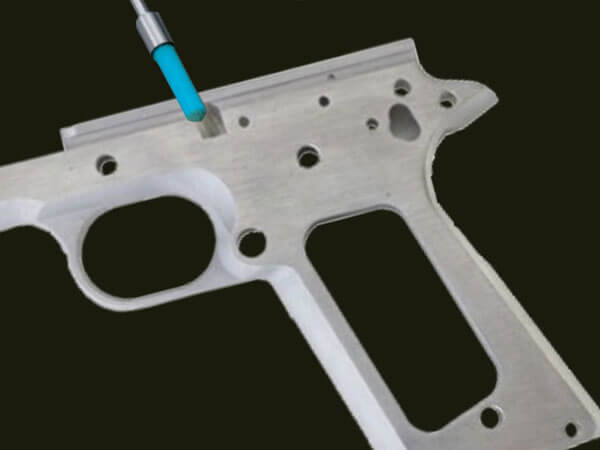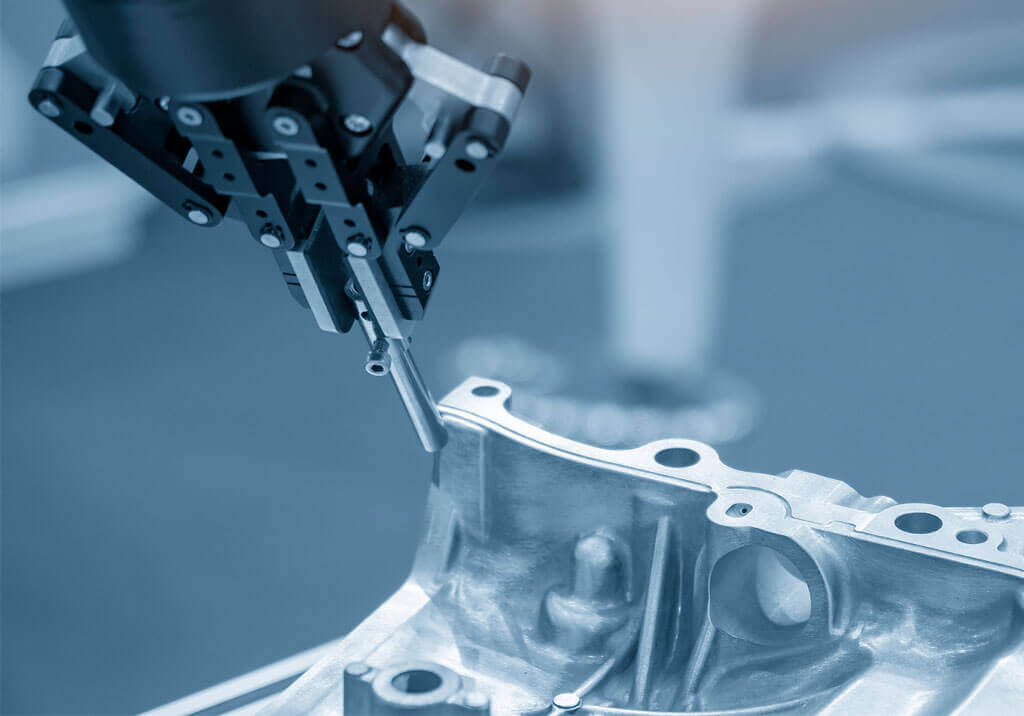Machine shops tend to operate with just the right number of staff and machinery to manage their production, no more and no less. They aim to maximize productivity with the resources they have, closely managing their shop efficiency to optimize costs without lowering their standards for quality. Implementing tools to achieve this in various stages of production, such as automating deburring and finishing tasks with Xebec ceramic fiber brushes, can quickly add up in terms of savings and productivity.
Any opportunity to improve processes and shorten run time can reduce unnecessary costs and improve a machine shop’s bottom line. It can also introduce opportunities for growth and lead to new business.
Any issue that impacts the shop’s resources can lead to immediate downtime. If a machine needs an unexpected repair, production requiring that machine stops. If a tool doesn’t meet its life expectancy, the shop might not have a replacement on hand.
These are evident interruptions in production that gain immediate attention. However, machine shops also have slow burning issues that reduce efficiency, such as manual work that can be otherwise automated in the machining process or improved with better tools. Manual work not only takes more time, it’s also subject to the energy and experience levels of individual employees.
Manual deburring and finishing are slow-burn issues that significantly impact a machine shops’ productivity. Compared to the performance of the latest tools and technologies available, manual methods don’t come close to competing. By replacing manual deburring and finishing with automation, machine shops can resolve issues with:
- Inconsistency: With manual processes, outcomes vary from one individual to another based on their skill, strength, experience with the part, energy level, tool of choice and more. Automated deburring and finishing are consistent and predictable.
- Capacity: Manual deburring and finishing add to cycle time and take workers’ time away from other jobs. With automated processes, you can reduce cycle time, run more jobs and increase profit. And you can increase production without increasing staff.
- Safety: Deburring metal by hand, particularly with ad-hoc tools, poses many safety risks. Automating this process protects your labor force, saving on costs related to injury and lost production due to limited staff.
If machine shops can resolve these issues, they can reduce costs in multiple ways: saving on expenses related to injury and worker downtime, increasing capacity and productivity, and producing consistent quality products with every run.
The High Cost of Manual Deburring and Finishing at Machine Shops
Considering how important it is for machine shops to reduce costs while increasing quality and be as efficient as possible, it’s worth focusing in on the financial impacts of manual deburring and finishing in the industry.
- Scrapped parts – Manual work can lead to errors that make parts unusable, particularly in industries like aerospace, firearms and medical. For instance, an imprecise edge break could result in scrap ranging from a few hundred dollars to hundreds of thousands.
- Rework time – If a part needs to be reworked, this adds significant time to the process and can easily back up resource-limited machine shop operations.
- Lost set-up time – Some parts have extensive set-up time, taking multiple hours, and this is a labor cost that must be accounted for when a part is scrapped.
- Travel time and expenses – There are expenses associated with simply moving a part, whether it only moves within the shop or is transported for outsourced deburring and finishing. Within the shop, transporting across the building for Quality Control has costs. Outside of the shop, logistics and travel add costs (not to mention the added risk of damage and employee injury).
- Bottlenecks – Scrap, rework and slow manual processes can lead to missed deadlines and send jobs over budget. In a machine shop, this easily leads to bottlenecks down the line, impacting upcoming runs, reducing productivity and profitability, and potentially damaging a shop’s reputation.
- Longer cycle times – Machine shops accept that Quality Control is a necessary step in the process and build that time into the cycle. However, with Xebec tools, shops have an opportunity to cut cycle time because the quality is consistent and the part is ready to ship off the machine. When the two options are compared, it’s clear this is another way manual work adds cost.
- Potential injury costs – Deburring and finishing metal by hand presents a substantial risk of injury, particularly if a shop doesn’t have quality, standardized tools for the task. Employee injuries have great financial impact. And machine shops that operate with slim staff can’t maintain optimal productivity while an employee recovers.
Xebec Deburring Solutions and Applications in the Machining Industry
Xebec deburring solutions perform both deburring and finishing at the same time. They offer consistent quality results, and they don’t call off or get sick. These tools have proven benefits in numerous industries, including Firearms, Medical, Aerospace, Powertrain and Energy.
Xebec ceramic fiber brushes are cutting tools that control the final step of the process on the most expensive machine in the shop – a CNC machine. With these tools integrated into your process, you not only eliminate manual deburring and finishing, but also the need to move the part to perform this work. This saves time and reduces costs.
For instance, one company implemented Xebec products in a process that previously required moving an extremely heavy part from milling and cutting to grinding via a crane. Just the movement from one machine to another took hours. With the Xebec tools integrated at the end of the milling and cutting process, they eliminated six hours per part in travel and grinding and saved $600 to $800 per part. The 25-millimeter surface brush they integrated deburrs and finishes a part in two minutes, and they can then crane it into a crate and out the door.
Xebec Surface Brush Use Case Examples by Industry
Firearms: Deburr and finish an aluminum alloy rifle rail.
Medical: Remove cutter marks and polish stainless steel artificial bone after end milling.
Aerospace: Deburr edge face of landing gear part after milling.
Powertrain: Deburr the matching surface of a cylinder head after face milling.
Energy: Deburr the ball end milled surface of a turbine blade.
Xebec handheld deburring solutions, such as the Xebec Stone Flexible Shaft, improve quality in deburring tasks that must be done by hand. For example, one customer went from $8,000 in scrap per week to below $600 with a Xebec handheld deburring tool. Previously, the shop was using a $17 cotton buff. Now, the $52 hand-deburring tool (EDP number 60003, white handheld brush 60002) lasts longer and cuts costs dramatically.
Area Tool & Manufacturing, Inc., a precision manufacturing shop, runs their CNC department with two operators and six machines. To improve efficiency in their processes, they eliminated manual deburring and finishing by implementing Xebec brushes in an automated CNC machine process. Since Xebec cutting tools do both the deburring and finishing process, they were able to cut 20 minutes of production time per part, saving up to 60 hours of labor per year. They’ve also been able to use Xebec brushes in other production processes, saving time, labor and money with each application.
How Xebec Helps Machine Shops Improve Their Bottom Line – And Grow
With Xebec products integrated into their production processes, machine shops can expect to experience a quick return in terms of benefits.
Eliminate unnecessary costs
Machine shops expect a certain amount of labor, scrap and rework related to their manual processes and build those costs into their budgets. With Xebec Deburring Technologies, shops can reduce these costs dramatically as they’ll get consistent quality deburring and finishing with each run.
Expand capacity and productivity
With these tools, both automated and handheld, machine shops can increase productivity in several ways. The tools complete deburring and finishing processes faster and with greater efficiency, allowing shops to increase throughput on parts. Employees can shift from manual deburring and finishing to perform other tasks, improving productivity in the shop. And Xebec integrated solutions enable shops to operate around the clock, further increasing production and operate with fewer staff
Improve employee safety
Xebec deburring technologies eliminate the need for manual deburring and finishing, which would otherwise put employees at risk of injury from accidents and repetitive motion.
Attain consistent quality
These tools deliver precise deburring and finishing, resulting in consistently worked parts every time, especially compared to manual deburring. As a result, you’ll have less scrap and rework, better quality outcomes and satisfied customers. All of this will help you retain an excellent reputation in your industry.






